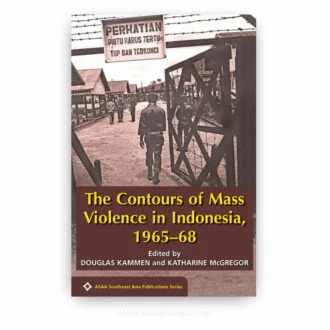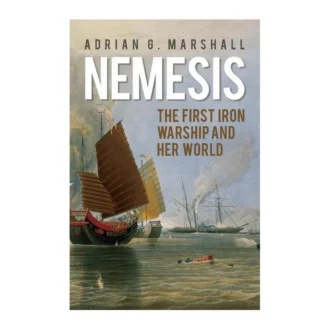The People’s Struggle: Cambodia Reborn is a vivid first-hand account of the career of one of the 20th century’s great guerrilla commanders, Samdech Heng Samrin, who after his years as a soldier played an important role in the political and economic rebirth of Cambodia. Among the great guerrilla commanders of the 20th century, the name Heng Samrin is almost unknown. Nevertheless, he went on to be a key player in the foundation of a modem and prosperous Cambodia.
Che Guevara and Leon Trotsky lie in their graves revered by the Revolutionary Left but the goals they proclaimed remain as distant as ever. Heng Samrin deserves another look and this autobiography gives us that opportunity. A short, illustrated book, published in 2011, deals with his political campaigns, particularly those following the Vietnamese advance into Cambodia at the end of 1978. This volume focuses on his early life and his role as a military commander working in the eastern region of Cambodia.
This book started on recounts Heng Samrin’ early childhood in a rural village. He was born in 1934, when Cambodia was still part of French Indochina. France had little interest in creating an educated Khmer peasantry and he ultimately fell back on Cambodian tradition, gaining an education when he entered the monkhood at a Buddhist elementary school for five years in 1949.
Following Cambodia’s national independence from France in 1953, he campaigned for the Khmer People’s Revolutionary Party in the country’s parliamentary elections in 1955. He describes his subsequent work as a rubber plantation worker and farmer before joining the underground Khmer People’s Revolutionary Party in 1961. Shortly thereafter, he made his first clandestine contact with the Viet Cong, the National Liberation Front in Vietnam, the beginning of a relationship that was to serve him well later in his life. As a party member, Heng Samrin worked as a government militia captain and volunteer teacher of village children by day, and as deputy head of an underground courier team by night. After a brutal government crackdown against a rebellion in northwest Cambodia in 1968, he went completely underground.
About this time, he had other encounters that were not so benign. In this book, he gives a vivid first-hand account of airstrikes in the mid-1960s, directed on to his own village by American advisors and the South Vietnamese airforce. Another encounter was with the chimeral Head of State, Prince Norodom Sihanouk, who for a time represented a political challenge to the Khmer People’s Revolutionary Party. But puff pieces in the US and French media could not disguise the fact that Sihanouk was essentially a feudal style prince, albeit an eccentric and charming one, and there was reason to expect that his overthrow in a coup while travelling abroad in 1970 would be the end of his political career. Marshal Lon Nol, the coup leader, declared a republic and then aligned the country with the United States, which was still fighting its war in Vietnam.
Prince Sihanouk, in exile in Beijing, aligned his forces with the Khmer People’s Revolutionary Party, which he dubbed the Khmers Rouges. Working with his former adversaries, the Prince launched the United National Front of Kampuchea to ‘liberate’ the country and defeat the Lon Nol regime. In the event, Sihanouk commanded few forces of his own and after the capture of Phnom Penh in 1975 would be placed under protective house arrest. From then on, the Prince enjoyed only minor trophy status and his days as a major Cambodian political figure were effectively finished.
Meanwhile, Heng Samrin had begun a meteoric rise in the People’s Revolutionary Army of Kampuchea. In five years, he went from section commander to regimental commander, and by 1976 was leading the country’s Fourth Division. It was during this period that Cambodia went through one of the greatest political upheavals of 1he 201h century However, there were deep political division within the revolutionary party, and jubilation was short-lived. Heng Samrin describes conflicts between his own Eastern Zone forces and those Irom the Southwestern Zone, as the deep shadows of Year Zero spread across the land. He was ordered back to the Eastern Zone after only three months in Phnom Penh.
Heng Samrin recounts how lists of ‘traitors’ started circulating as early as 1976; and how Pol Pot used a familiar populist ploy, invoking hatred for the Vietnamese, and publicly ordering attacks on Vietnam. The killing of Eastern Zone military commanders and party secretaries followed in 1978—they were seen not to be enthusiastic enough in carrying out these raids. But not all Khmer Rouge commanders fitted that perception; particular exceptions were those in the Southwestern Zone whose exceptionally savage raids on the Chau Doc and Ha Tien areas inside Vietnam finally caused the Hanoi Politburo-s patience to snap. A task force of Cambodian and Vietnamese forces was assembled, and it surged across the border, capturing Phnom Penh in January 1979.
Despite the overthrow of Pol Pot’s forces, and notwithstanding the Paris Peace Agreements of 1991 and UN-brokered elections in 1993, a civil war would go on for another two decades. While the remaining Pol Pot forces had made the Thai border area a stronghold, that very situation allowed the Government forces to bottle them up in there. There was no public backing for them within Cambodia, and so they lacked the local support that any guerrilla army needs. Most of Pol Pot’s forces had simply died by the turn of the century and, as a political and military entity, they were in no position to impose their ideology on anyone.
After the defeat of Pol Pot in 1979, Heng Samrin played an important part in laying the foundations for the new Kingdom of Cambodia. He served as both Head of State and as secretary-general of the ruling Khmer People’s Revolutionary Party, since renamed as the Cambodian People’s Party, of which he still serves as honorary chairman. In 2006 he became president of the National Assembly.











Reviews
There are no reviews yet